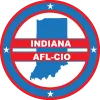WHEREAS, over the past 50 years, US railroads have continuously pursued a reduction in the size of crews operating trains, from six persons down to the current negotiated minimum of two crew members on through freight services; and
WHEREAS, Indiana is known as the "Crossroads of America" and boasts 3,884 route miles of active rail lines; and
WHEREAS, the elimination of crew members down to the current negotiated minimum of only two has created a situation that significantly reduces the years of on-the-job experience formerly available on larger crews, which had allowed crew members to develop their skills, knowledge, and territorial familiarity; this has resulted in a scenario where new and inexperienced train crews are now operating trains without seasoned, well-qualified persons, to the detriment of the safety of the public and the employees alike; and
WHEREAS, railroad operational requirements require that train crews perform numerous tasks while concurrently operating moving trains, which the National Transportation Safety Board has labeled "task saturation," which can result in crews overlooking specific actions related to safe train operation; and
WHEREAS, technology, while improving the safe movement of trains, cannot replace the safety and security of train crews consisting of a minimum of two qualified persons, the presence of which provides additional safeguards, including the ability of crew members to cross-check and verify each other's actions and activities while operating trains, to adequately respond to accidents and critical incidents, as well as the capability to separate rail cars at crossings to allow emergency responders to cross tracks which is a function which cannot be performed by one person; and
WHEREAS, on July 6, 2013, a Montreal, Maine and Atlantic freight train, staffed by only one crew member, was left unattended and inadequately secured and therefore rolled away, resulting in a major derailment of hazardous oil that caught fire, killing 47 people and causing catastrophic destruction to the town of Lac-Megantic, Quebec, Canada; and
WHEREAS, between July 24, 2013 and June 18th, 2017 there have been 33 major US railroad accidents involving hundreds of death, countless injuries, explosions, fires and environmental damage, on June 3, 2016 a Union Pacific oil train with 96 carloads of flammable crude oil derailed in Mosier, Oregon on the south side of the Columbia River Gorge while moving at 26 mph, resulting in an oil leak and fire involving four railcars, and resulting in the evacuation of the town for several days; and
WHEREAS, crude oil and hazardous material shipments by rail have increased exponentially in recent years, outpacing rail capacity; first-responder training and state spill response planning are inadequate; and railroad crew fatigue abatement programs are nonexistent, creating public safety and environmental concerns; and
WHEREAS, chronic fatigue is epidemic on US railroads, due to operational requirements that include no regular working schedule for crew members, as well as intentional underemployment policies by the carriers, through which they maximize profits at the expense of public and employee safety, requiring crew members to return to work immediately after the minimum required federal rest has expired; and
WHEREAS, rail carriers have recently imposed draconian attendance policies that punish railroad employees who attempt to take additional time off for illness, to obtain adequate rest or for family matters, resulting in train crew members reporting for work even when they are ill or recognize they are experiencing fatigue and are not ready for duty, creating a serious employee and public safety risk; and
WHEREAS, in 2014 the Burlington Northern Santa Fe railroad proposed that freight train crew sizes be reduced to just one person: the locomotive engineer, who would be alone in the locomotive cab and working frequently for time periods as long as 12 hours, the proposal was rejected by a margin of 83% of rail labor union members voting; and
WHEREAS, Transport Canada, the equivalent of the US Department of Transportation, now requires all trains moving hazardous materials to have a crew of no fewer than two persons, it being recognized that train crews should consist of at least two qualified employees, due to the large number of tasks required of such employees in order to operate a train safely; and
WHEREAS, when considering railroad safety and hazardous commodity train safety, it is irresponsible and illogical to ignore train crew size issues and rail crew response capabilities when considering methods and legislation to increase train safety, as the two are intertwined and inseparable; and
WHEREAS, the Indiana State AFL-CIO, at its 2015 convention, in the interest of public safety and employee safety, passed a resolution to steadfastly oppose any actions to permit one-person train crew operations on Class I railroads operating in our state and elsewhere; now, therefore, be it
BE IT THEREFORE RESOLVED, that the Indiana AFL-CIO supports and fervently urges the Indiana General Assembly to enact proposed legislation prohibiting one-person train crew operations which are already operating in our state on short-line railroads to the detriment of public safety, and enact minimum two-person crew size requirement on all freight trains;
AND, BE IT FURTHER RESOLVED, that the Indiana AFL-CIO endorses HR 233 the Federal Safe Freight Act and we hereby strongly encourage all members of our state's congressional delegation to cosponsor and seek enactment to require all trains operating in the United States to be staffed with a crew of no fewer than two persons;
BE IT FINALLY RESOLVED, that the Indiana AFL-CIO hereby determines that the enactment of legislation to prohibit one-person train crews and require additional train crew members on hazardous commodity trains shall continue to be a priority issue within in its 2018 legislative agenda.
Submitted by: Brian J. Farkas, Vice President, Indiana State AFL-CIO, BLET
